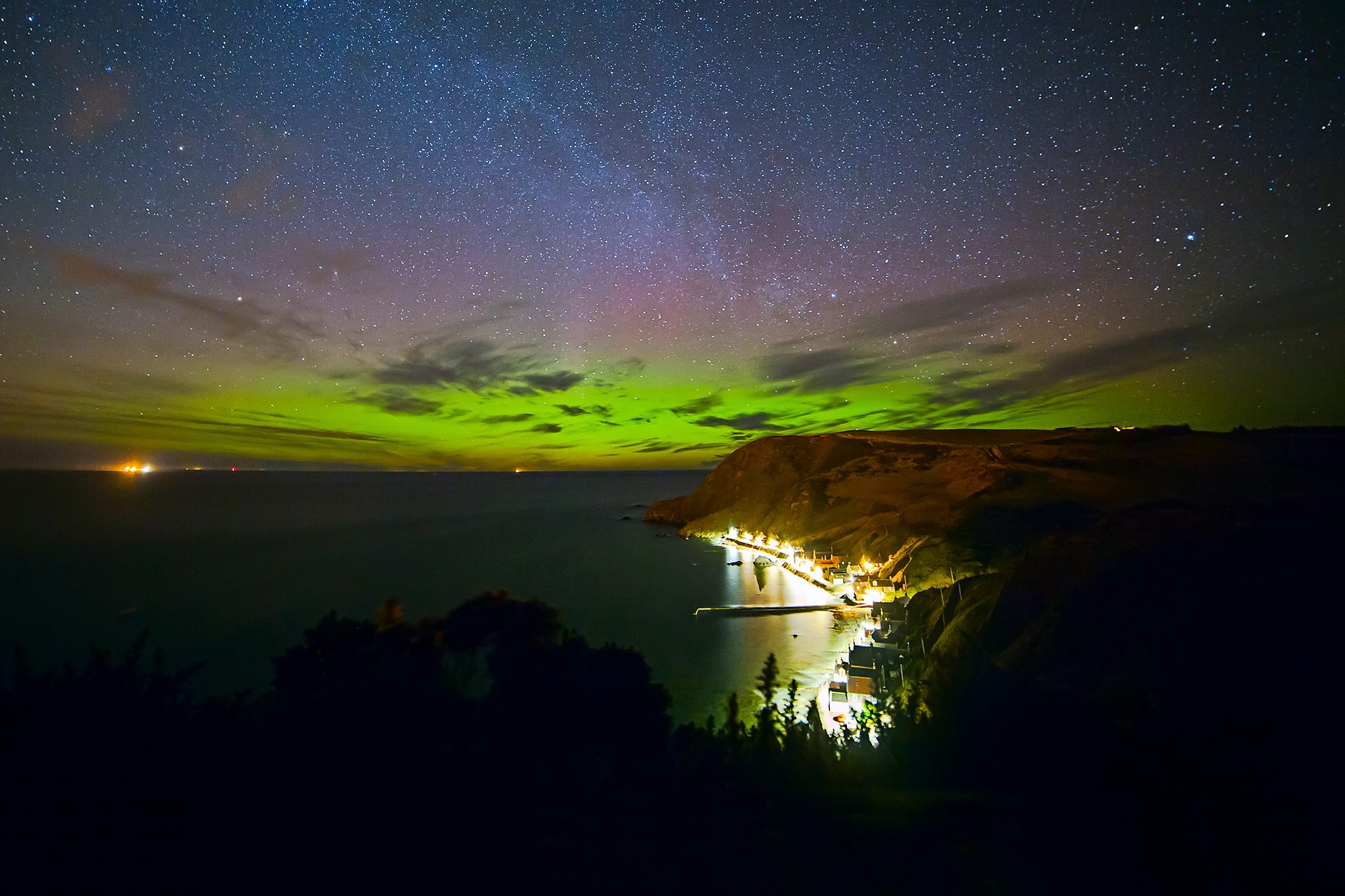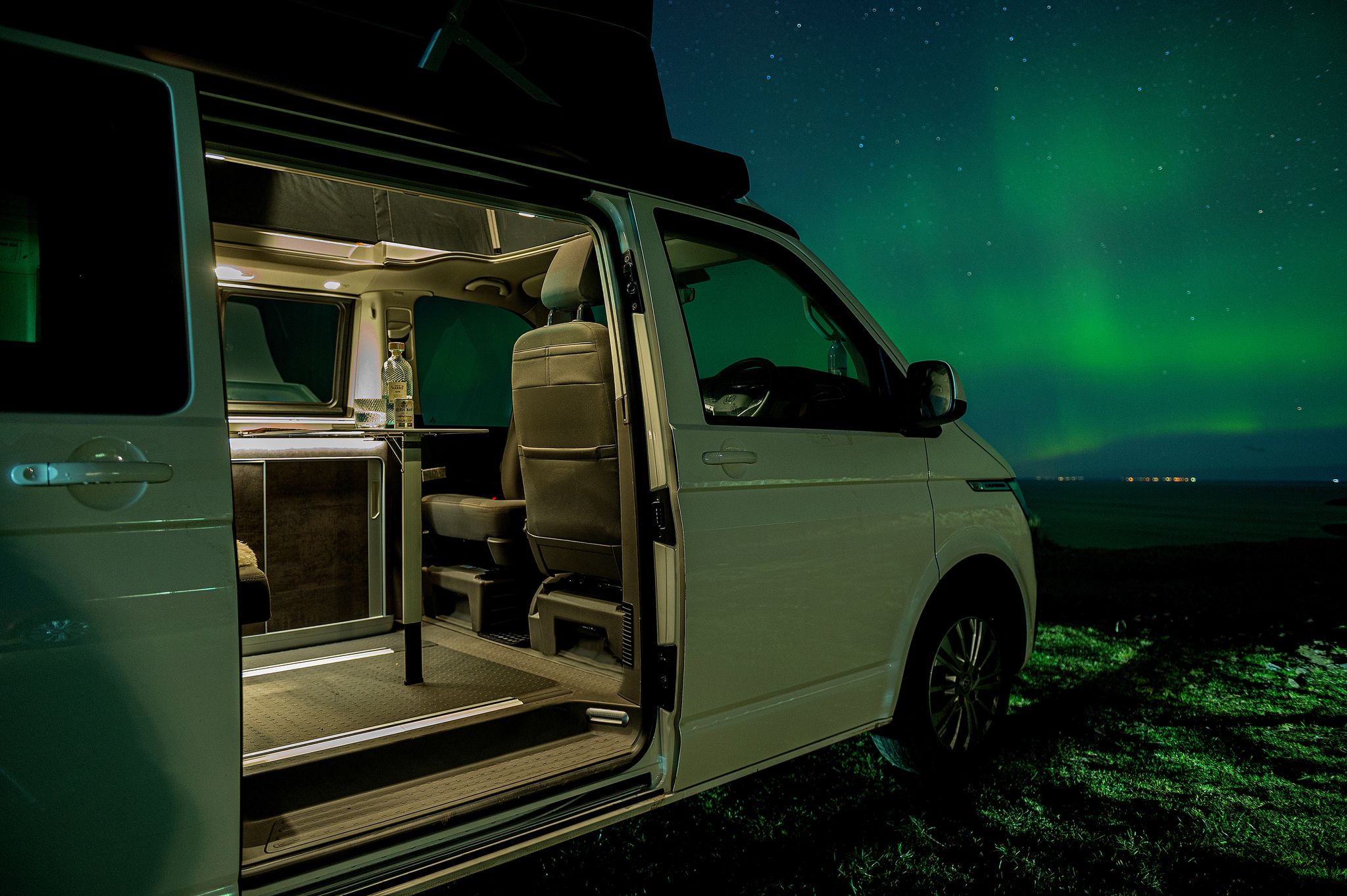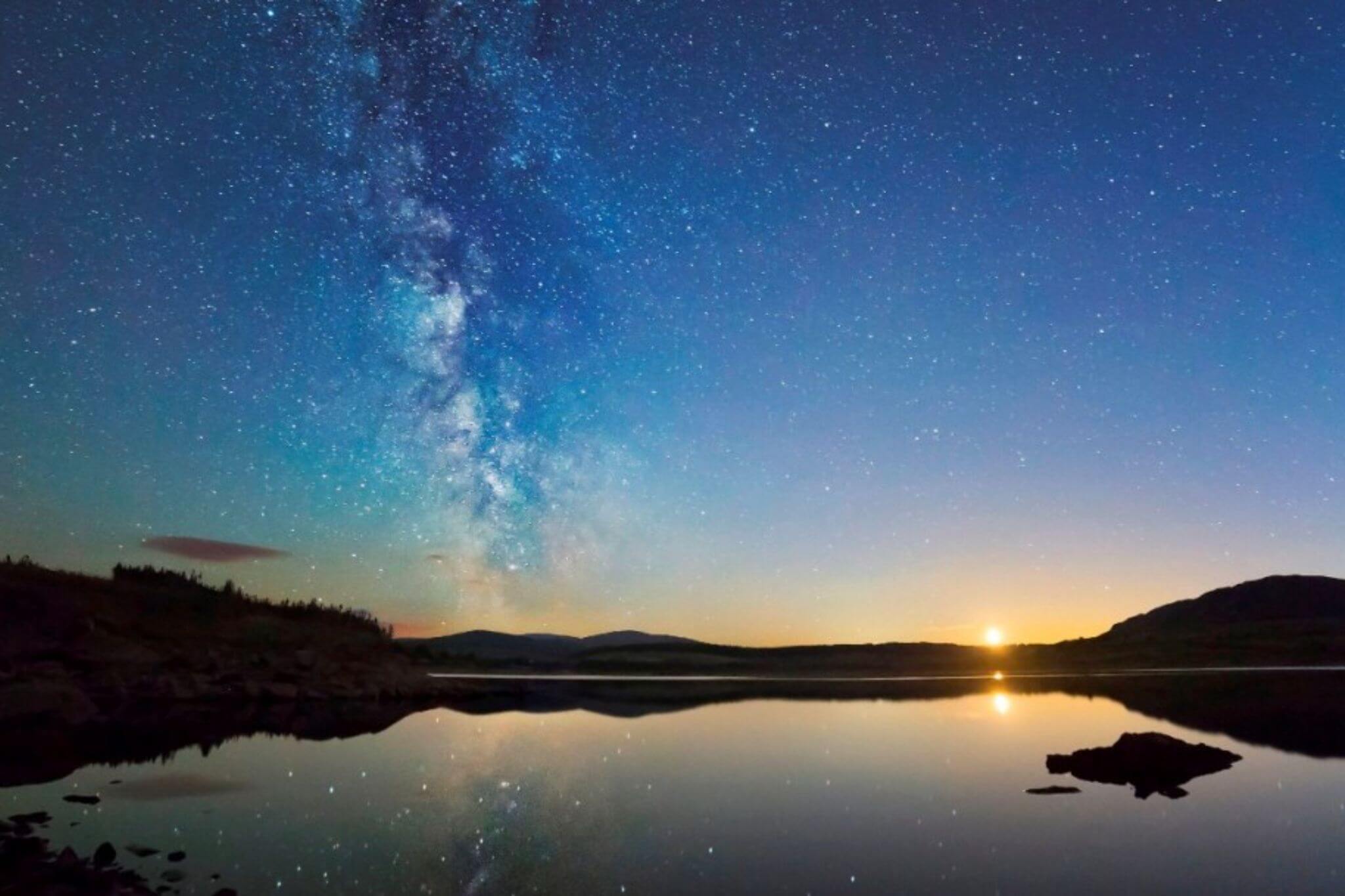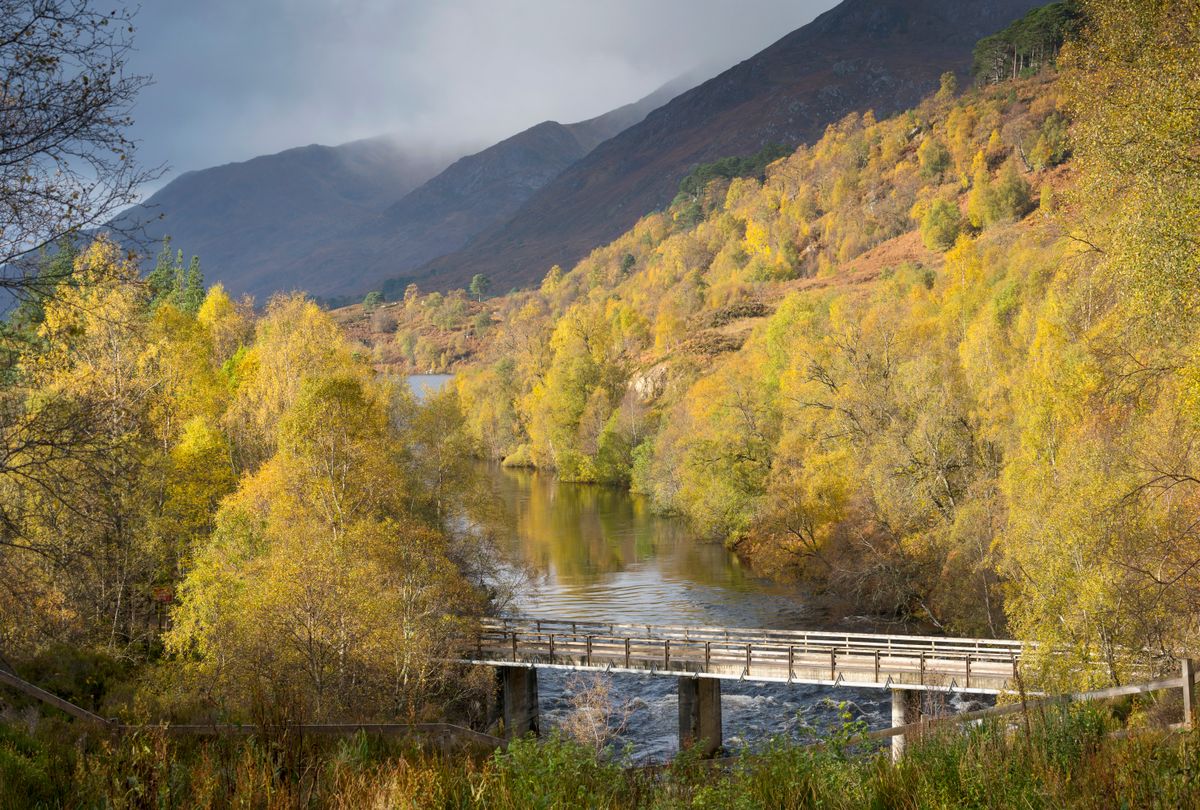Bruce’s Stone, Loch Trool
© Visit South West Scotland / Ben Bush
Galloway Forest Park
You can look forward to exceptionally dark night skies in Galloway Forest Park, the UK’s largest forest park in Dumfries & Galloway. Very few people live within the boundaries of Galloway Forest Park, meaning the nights are extra clear.
Clatteringshaws Loch and Kirroughtree Visitor Centre are perfect spots from which to view the night sky, and there are often stargazing events and guided tours by special Dark Sky Rangers.
Isle of Rum
The Isle of Rum in the Inner Hebrides has just been named Scotland's first International Dark Sky Sanctuary! There's only one other in Europe and only 20 others around the globe, so this starry accolade makes the island well-worth a visit if you want to experience the full wonder of the night sky.
There's no public lighting on Rum and only 40 full-time residents, which means the skies above are free from pollution and provide exceptional stargazing opportunities. The island is a National Nature Reserve supporting a rich and varied habitat, so you can truly get off the grid and feel inspired. Rum is pretty small; you can walk or bike around the island after catching the ferry over from Mallaig.
Learn more about Scotland's first International Dark Sky Sanctuary
Caerlaverock Castle situated near the town of Dumfries
© VisitScotland / Damian Shields
Moffat
After adopting special street lighting to keep light pollution to a minimum, Moffat was named Europe’s first "dark sky town". Located in Dumfries & Galloway, the town has similar light quality to rural areas and is a great place to stay and stargaze in Scotland. During daylight hours, the surrounding hills and the local section of the Southern Upland Way provide excellent walking opportunities, while the River Annan is good for fishing.
Tomintoul and Glenlivet - Cairngorms Dark Sky Park
During the darker months of the year, you’ll find that the Tomintoul and Glenlivet area of the Cairngorms has amazing stargazing opportunities. Dark sky events take place all year round here with the Cairngorms Astronomy Group. Amateur astronomers, night-time photographers and enthusiasts can enjoy stunning views deep in the Cairngorms. Interested in a road trip? The Snowroads route will take you right through the Tomintoul and Glenlivet area.
North Ronaldsay Lighthouse
© VisitScotland / Paul Tomkins
North Ronaldsay
Orkney’s northernmost island, North Ronaldsay, has long been associated with dark and clear night skies. In 2021, the island was officially recognised as a "dark sky island". On winter nights, you’ll see the stars sparkle across the sky in a truly dramatic display. When conditions are right, you may even see the Northern Lights dancing in purple and green. A trip to this remote part of Scotland will also give you the chance to meet the island’s famous seaweed-eating sheep and visit the UK’s tallest land-based lighthouse.
A Beach Near Gallanach, Isle Of Coll, Inner Hebrides
Coll
This tiny island off the west coast of mainland Scotland is one of the best places to stargaze in the UK. Designated a "dark sky community" in 2013 by the International Dark Sky Association, the Isle of Coll is blessed with extremely low light pollution, ensuring clear vistas to observe the stars. The best time to visit for a stargazing holiday is from August to March, when the skies are at their darkest. In high summer it's light almost all day! The island is quite flat, so almost anywhere is suitable to see the night sky in all its wonder, weather permitting.
Shetland
Shetland’s skies are always changing – on clear nights these islands are undoubtedly one of the best places in the UK to view the night sky. Why not head up to Unst, Britain's most northerly inhabited island, and follow the new Sky Trail? The trail takes you round this fascinating island, visiting a Viking longhouse, a musical bench with arresting views, a ruined castle and a sandy white beach. These stops introduce you to different aspects of the skies, including local sayings about the weather, Viking history and contemporary issues such as climate change and tidal energy.




